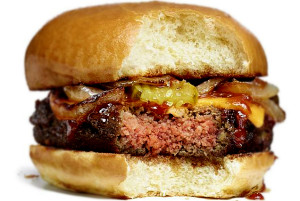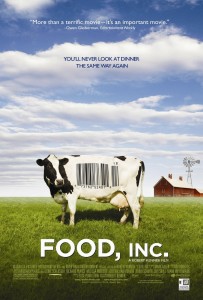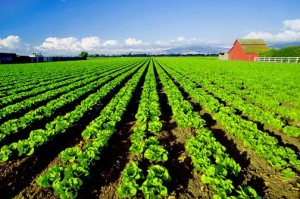When you take your first bite into that juicy cheeseburger or hearty burrito, I know I can attest for myself and I’m sure many more, that you’re definitely not thinking where exactly did that red meet or those vibrant colored vegetables originate, or better yet how harmful they can potentially be.
In just 2002, the typical American consumed an average of 137 pounds of beef, chicken, fish, and shellfish per year,” stated the article You are what they eat. While we are lead to believe that beef, chicken, fish and shellfish are the source of power and protein that are body craves, nonetheless, that is not always the case. Foodborne illnesses are becoming more and more prevalent amongst us. According to an article regarding food safety on behalf of NESTLE to Consumer Reports You are what they eat “Campylobacter, Salmonella, Shigella, and E-Coli are amongst the most common illnesses from these various foods, totaling 76 million illnesses, 325,000 hospitalizations, and 5,000 deaths and most of us are not even aware of this.”
Unfortunately, many pathogens infect the animals we use for food without causing any visible signs of illness. Today a major proponent to these illnesses is the grand scale that our food is being produced on. Unbeknownst to many, the packaging on items is solely an illusion and only a few corporations control the whole industry. The monstrous production line today that all these products stem from allows for much more contamination, and less regulation.
Stated in Resisting Food Safety “In the late 1980’s health officials found salmonella in one-third of all poultry and estimated that 33 million Americans experienced at least one episode of foodborne microbial illness each year.” With this being said the outbreaks of food borne illnesses over time are becoming more dangerous and common. Even worse food producers are resisting the attempts of government agencies to impose controlled measures, and often pushing these issues in the dark. The article Resisting Food Safety clearly displays how the food producers are reacting when it states, “… food producers repeatedly deny responsibility for foodborne illness…” Having little cooperation from the production end makes it very difficult to improve the general standards as a whole.
Today, the most blatant illness is the E-Coli outbreak. E-coli derives from infections that come in direct contact with food and water that have been contaminated with feces; the virus then eventually kills red blood cells and can be lethal. Years ago people were only aware of undercooked hamburger, and ground beef to be the only sources of E. coli. However, today things such as fruits, vegetables, apple cider and sprouts have also been infected. A prime example of this was when E. coli unexpectedly swept Chipotle’s all across the country. An obstacle the company faced among the 58 cases that broke out was that Chipotle could not find the direct source of the E. coli, possibly stemming from the tomatoes or beef. In turn this prolonged the process longer and made it much harder for the company to detain the contamination.
Food, Inc. displays an instance in beef where the illness was lethal to 2-year-old Kevin. Kevin passed away from E-coli in his burger, and it turned out that the beef Kevin consumed was not recalled until 16 days after. Kevin’s mom sought justice in honor of Kevin, and now a law has now been put into place, “Kevin’s Law”- Kevin’s Law allows the USDA to shut down plants immediately.
We go to the supermarket and see dozens of options and brands, thinking that each came from different places. However, the truth is that this is just an illusion; while many have different logos and may look different to the eye, much of all the products come from the same places.
As quoted in Food, Inc. a farmer’s goal is to “produce a lot of food, with a small amount of land, at an affordable price.” Frankly, a few major corporations control the whole industry and small farms raising numerous kinds of crops and animals have been replaced by unfathomably large factory like methods.
Household brands such as Tyson, is a prime example of just that. Today, Tyson is one of the leading meat packing companies in the nation. In 1970, Tyson controlled 5-25% of the market; today Tyson now controls 40-80% of the meat packing market.
Unavoidably, when raising massive populations of chicken or cattle in the same location calls for more manure then can be contained or converted to fertilizer. When farmers normally raise an average amount of animals they can control and compost the waste, which is a process that usually generates enough heat to kill bacteria. Today that is much harder to get done with the volume of animals, inevitably, increasing the tendency for contamination and illness.
Another leading debate among the food industry is weather or not the suppliers and demanders should go organic or remain conventional.
Personally just in my local grocery store, I see the organic section continuing to expand each year. Years ago we didn’t have three isles dedicated solely to organic products with options that expand to organic shampoo, make up, toothpaste, and food. According to Food, Inc. the organic industry is growing at an annual rate of 20%, however as stated in Organic Illusions “The quantity of organic sales constitutes considerably less than 4 percent of the total market.”
Currently, the argument of organic food versus conventional food is also a rising topic among farmers. In the article You are what they eat discussed is going organic, “If all animals were raised organically on feed lacking pesticides, animal byproducts and antibiotics- would our food supply be safer? Yes in some ways. There would be less risk of mad cow disease, little or no arsenic in chicken … But there is no guarantee that organic feed is free of garden- variety bacteria, including salmonella.” Ironically when deciding between organic or conventional food, in organic food no check is ever done to test the reliability of these titles.
Although you are may be buying organically, organic foods have a higher rates of deadly E. coli, while conventional foods were higher in pesticide residue that substantially less toxic.
Even if we were to go organic there is not enough land readily available for production as quoted in Organic Illusions, “ If food demand nearly doubles over the next 50 years, as its predicted to do, there just isn’t enough arable land available to support a wholesale adoption of organic methods.”
Sadly today, the reality is that the food we consume on a daily basis is not always safe. Foodborne illnesses have had an affect all across the country in a variety of different manners. Many different kinds of illnesses have been seen with E. coli being the most dominant. The harsh reality is that our food is deriving from all the same places and it is very hard to regulate things on such a grand scale. Even organic “all natural” food is not always the answer. While, this may all be the circumstances today- I am hopeful that in the future with awareness, our food production ways can be changed and improved to lead a healthier lifestyle.
Reflection Questions
- Describe your understanding of the “writer’s project”? How were you able to identify the texts’ “project”? Discuss your own “project” as it pertains to this particular blog article.
When I first came in contact with Joseph Harris’s Rewriting How to Do Things with Texts article, I was slightly confused by all the information. He spoke about many different aspects in writing- defining the project of a writer, assessing uses and limits, some terms of art and about coming to terms with the overall text. After coming to class that week and braking down the subsections as a class, I gained a complete better understanding. To push beyond the test I found that you must a- figure out what the writer/artist is trying to do in the text. To my understanding what this meant is that you have to try and figure out what is the writer or authors overall motive with the text, why are they doing such a thing/creating this work of art? Secondly, b- you must understand what is his/her project?, what is the plan of work, set of ides and questions that a writer/artist presents, something that a writer is working on. Ultimately what part b is trying to convey is that you must understand how the writer is going literally to express part a, what is the plan of action? And lastly, part c- what someone has said and what she is trying to accomplish by saying it. What part c means is that you have to grasp the feedback of others and think about what you as a writer or artist is trying to get at, by presenting this piece of work?
- Describe your completion of the “Sorting it Out” workshop? What sections were most beneficial to the development of your ideas—and why? Discuss how this workshop assisted in development of draft and/or assignment organization?
Due to unfortunate circumstances I was absent while the class worked on the sorting it out workshop. When looking at document on my own time, the organization as a whole helped me determine what you would be looking for in this assignment. The breakdown of everything made it very evident that you were looking for many sources with clear and concise arguments. Overall, the document helped to clarify exactly what you wanted in our final pieces.
- Describe your understanding of synthesis. What is its importance? How did it manifest within your drafts and/or final blog article? Provide examples.
To my understanding a synthesis is when you draw influences between a variety of different texts to display the writers understanding of a project and how they all complement one another. A synthesis is very important because when you are writing and having to collect information from multiple sources, knowing how to synthesize will help your further your overall goal in a more sophisticated manner- being able to take many different perspectives, compliments, and colliding views and combining them all. Learning about a synthesis undoubtedly helped me further my drafts and final blog article. Through out the course of unit one we gathered information from multiple texts and sources, such as Food Inc., You are what they eat, Organic Illusions and Resisting Food Safety. Having a better understanding of a synthesis allowed me easily combine them all together, drawing connection, perspectives, opinions between one another to form my final blog article.
- Describe your own accomplishment (of something) during this unit.
Overall, my own personal accomplishment during this unit is that I know feel incredibly more comfortable being able to compose a piece using many different perspectives yet still come to a general consensus. I thought it was nice how we slowly worked in all the different pieces and gained a firm grasp on each before moving to the next one. The grids and handout that we made comparing the many different sources were very helpful. The unit was well organized and allowed me to understand each topic clearly.
- Discuss the evolution of the main idea. Where did you begin (include the example) and show its progress (again, include example) throughout the drafting/revision process. To what do you attribute its evolution?
The evolution of my main idea came from 500-word piece, and still remains in my final draft when I state in my introduction, “While we are lead to believe that beef, chicken, fish and shellfish are the source of power and protein that are body craves, nonetheless, that is not always the case.” I think that this is the evolution of my main idea because from such a young age we are taught the food is a need for survival, which it is. However, so many people are blind to the problems we as a nation are facing on so many different levels. Its progress is shown through out my whole piece. Reiterating the struggles that many of us are unaware of, and proving the blindness in the middle when speaking about how about only a few companies control the industry in its entirety and how organic food may just be an misconception.
- Discuss what organizational strategies you implemented in order to structure this blog article. Provide examples from a section(s) of an earlier draft and other excerpts in later drafts to support your response.
An organizational strategy that I implemented to create this blog article was in my first draft introduction paragraph I touched upon all three main ideas I was going to speak about. One being the illnesses itself, the second the grand scale that our food is produced on, and the third the debate between organic and conventional food. For example, “In just 2002, the typical American consumed an average of 137 pounds of beef, chicken, fish, and shellfish per year,” states the article You Are What They Eat. While we are lead to believe that beef, chicken, fish and shellfish are the source of power and protein that are body craves, nonetheless, that is not always the case. Campylobacter, Salmonella, Shigella and E-Coli are amongst the most common illnesses from these various foods, totaling 76 million illnesses, 325,000 hospitalizations, and 5,000 deaths. Today a major proponent to these illnesses is the grand scale that our food is being produced on. Many argue that the answer to these unfortunate problems is to grow organically while many disagree and think that conventional food is just fine and if not better overall.” In my later drafts and making my work more “blog like” I broke pieces up and start off a little differently with my lede stating, “When you take your first bite into that juicy cheeseburger or hearty burrito, I know I can attest for myself and I’m sure many more, that you’re definitely not thinking where exactly did that red meet or those vibrant colored vegetables originate, or better yet how harmful they can potentially be.”
- Provide an example of the final draft where you successfully synthesize 3 texts in a concise and direct manner. Discuss how this evolved throughout the drafting process for you.
An example in my final draft where I successfully synthesize is when I say, “Unfortunately, many pathogens infect the animals we use for food without causing any visible signs of illness. Today a major proponent to these illnesses is the grand scale that our food is being produced on. Unbeknownst to many, the packaging on items is solely an illusion and only a few corporations control the whole industry.” This is a prime example of a synthesis because I use information from Resisting Food Safety, You are what they eat, and the film Food Inc. This synthesis along with my piece as a whole evolved throughout the drafting process for me because because each time I drafted learned how to better compact, diverge, and collide ideas.
- Discuss the evolution of the ‘lede’ in earlier drafts and its final version (provide examples of each): where did you begin, what feedback did you receive, and how did it end up in final blog article?
In my earlier drafts and prior to discussing ledes I did not have one incorporated at all. I started off my draft going straight into statistics and stating, “In just 2002, the typical American consumed an average of 137 pounds of beef, chicken, fish, and shellfish per year,” thinking this would excite the reader. While I think this can also be a good tactic, a lede is much better. In class when we did peer editing, my edior suggested I incorporate a lede instead of going straight into the facts, so prior to these statistics in my final blog I article I added, “When you take your first bite into that juicy cheeseburger or hearty burrito, I know I can attest for myself and I’m sure many more, that you’re definitely not thinking where exactly did that red meet or those vibrant colored vegetables originate, or better yet how harmful they can potentially be.”
- Name a specific writing/researching/revision goal you’d like to work on during the next Unit projects.
During the next unit project and through out the course of this class I would like to work on making my writing overall less wordy and more concise.


